Das Boot
9.2 /10 1 Votes
98% Rotten Tomatoes 86% Metacritic Genre Adventure, Drama, War Duration | 8.4/10 IMDb 4/4 Roger Ebert Country West Germany | |||||||||||||||||||||||||||||||||
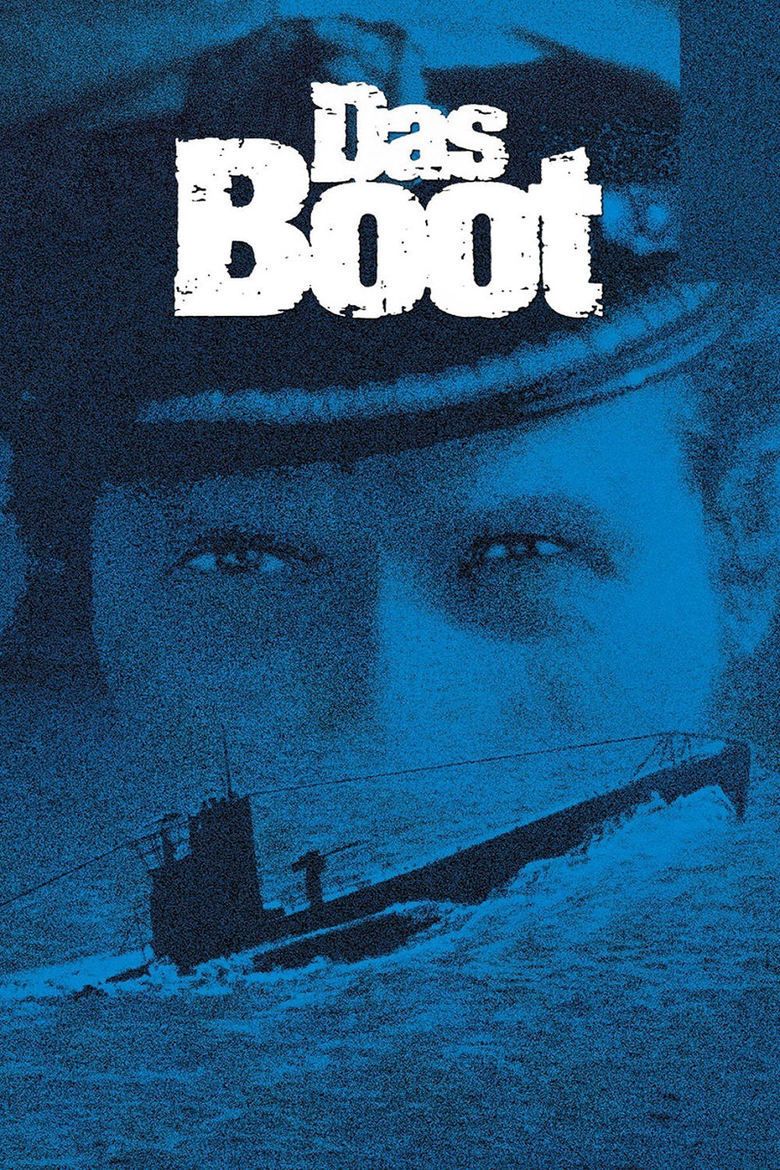 | ||||||||||||||||||||||||||||||||||
Language GermanEnglishFrench Release date 17 September 1981 (1981-09-17) Based on Das Boot by Lothar-Gunther Buchheim Writer Wolfgang Petersen (screenplay), Lothar G. Buchheim (novel) Initial release September 17, 1981 (West Germany) Cast (Kapitän-Leutnant Heinrich Lehmann-Willenbrock), (Leutnant Werner), (Der Leitende/Fritz Grade), (1WO), (2WO), (Kriechbaum/Navigator) Similar movies Saving Private Ryan , Alien , Valkyrie , Max Manus: Man of War , Jaws , Snow White and the Seven Dwarfs Tagline When the hunters become the hunted | ||||||||||||||||||||||||||||||||||
Das boot trailer
Das Boot ( [das ˈboːt], German meaning "The Boat") is a 1981 German war film written and directed by Wolfgang Petersen, produced by Günter Rohrbach, and starring Jürgen Prochnow, Herbert Grönemeyer, and Klaus Wennemann. It has been exhibited both as a theatrical release and as a TV miniseries, and in several different home video versions of various running times.
Contents
- Das boot trailer
- Das boot best movie scene ever
- Plot
- Cast
- Production
- Sets and models
- Special camera
- Different versions and home video
- Critical response
- Criticism by novelist Buchheim
- Soundtrack
- References

An adaptation of Lothar-Günther Buchheim's 1973 German novel of the same name, the film is set during World War II and tells the fictional story of U-96 and its crew. It depicts both the excitement of battle and the tedium of the fruitless hunt, and shows the men serving aboard U-boats as ordinary individuals with a desire to do their best for their comrades and their country. The screenplay used an amalgamation of exploits from the real U-96, a Type VIIC-class U-boat.
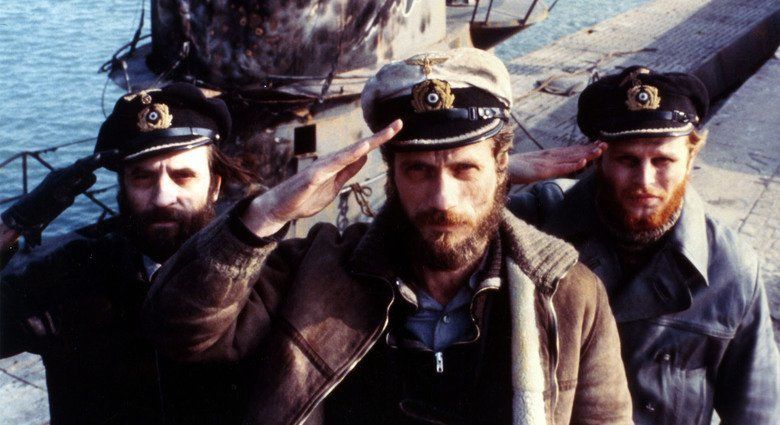
Development began in 1979. Several American directors were considered three years earlier before the film was shelved. During production, Heinrich Lehmann-Willenbrock, the captain of the real U-96 and one of Germany's top U-boat "tonnage aces" during the war, and Hans-Joachim Krug, former first officer on U-219, served as consultants. One of Petersen's goals was to guide the audience through "a journey to the edge of the mind" (the film's German tagline Eine Reise ans Ende des Verstandes), showing "what war is all about".
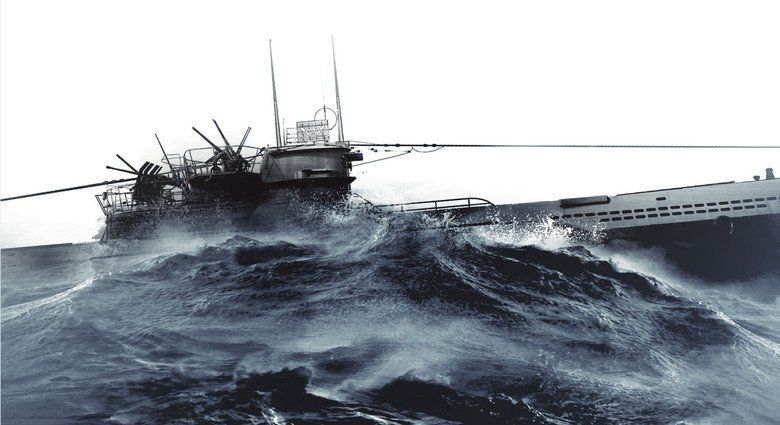
Produced with a budget of 32 million DM (about $18.5 million), the film was released on September 17, 1981, and then re-released in 1997 in a longer director's cut version supervised by Petersen. It grossed over $80 million worldwide from these two theatrical releases and was a critical and financial success. Its high production cost ranks it among the most expensive films in the history of German cinema. It was the second most expensive up until that time, after Metropolis.

Das boot best movie scene ever
Plot
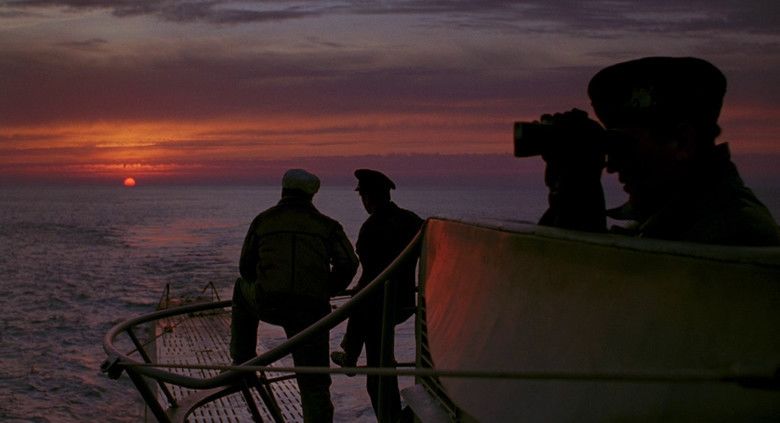
Lt. Werner (Herbert Grönemeyer), has been assigned as a war correspondent on the German submarine U-96 in October 1941. He meets its captain (Jürgen Prochnow), chief engineer (Klaus Wennemann), and the crew in a raucous French bordello. Thomsen (Otto Sander), another captain, gives a crude drunken speech to celebrate his Ritterkreuz award, in which he openly mocks not only Winston Churchill but implicitly Adolf Hitler as well.
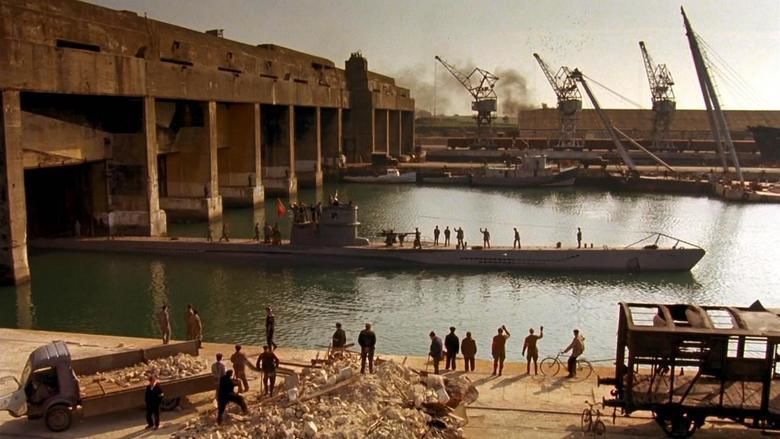
The next morning, they sail out of the harbour of La Rochelle to a cheering crowd and playing band. Werner is given a tour of the boat. As time passes, he observes ideological differences between the new crew members and the hardened veterans, particularly the captain, who is embittered and cynical about the war. The new men, including Werner, are often mocked by the rest of the crew, who share a tight bond. After days of boredom, the crew is excited by another U-boat's spotting of an enemy convoy, but they soon locate a British destroyer. While the captain attempts to sink the destroyer, it sees the sub's periscope, and they are bombarded with depth charges. They narrowly escape with only light damage.
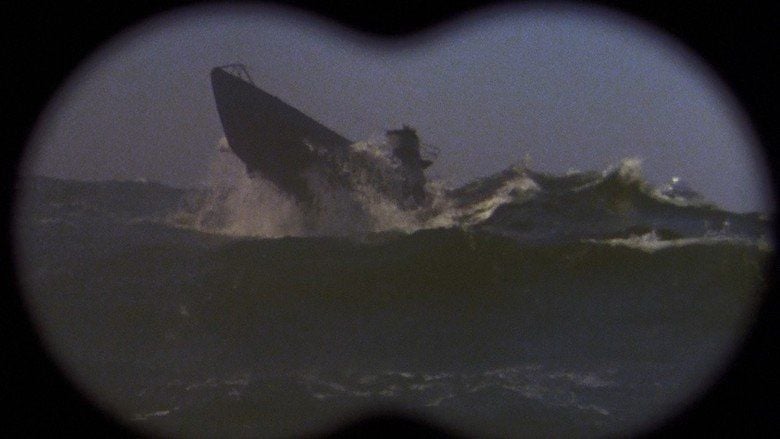
The next three weeks are spent enduring a relentless storm. Morale drops after a series of misfortunes, but the crew is cheered temporarily by a chance encounter with Thomsen's boat. Shortly after the storm ends, the boat encounters a British convoy and quickly launches four torpedoes, sinking two ships. They are spotted by a destroyer and have to dive below the submarine's rated limit. During the ensuing depth-charge attack, the chief mechanic, Johann, panics and has to be restrained. The boat sustains heavy damage, but is eventually able to safely surface in darkness. An enemy tanker remains afloat and on fire, so they torpedo the ship, only to realize that there are still sailors aboard; they watch in horror as the sailors leap overboard and swim towards them. Unable to accommodate prisoners, the captain orders the boat away.

The worn-out U-boat crew looks forward to returning home to La Rochelle in time for Christmas, but the ship is ordered to La Spezia, Italy, which means passing through the Strait of Gibraltar—an area heavily defended by the Royal Navy. The U-boat makes a secret night rendezvous at the harbour of Vigo, in neutral although Axis-friendly Spain, with the SS Weser, an interned German merchant ship that clandestinely provides U-boats with fuel, torpedoes, and other supplies. The filthy officers seem out of place at the opulent dinner prepared for them, but are warmly greeted by enthusiastic officers eager to hear their exploits. The captain learns from an envoy of the German consulate that his request for Werner and Johann to be sent back to Germany has been denied.
The crew finishes resupplying and departs for Italy. As they carefully approach Gibraltar and are just about to dive, they are suddenly attacked by a British fighter plane, wounding the navigator. The captain orders the boat directly south towards the African coast at full speed. British ships begin closing in and they are forced to dive. When attempting to level off, the boat does not respond and continues to sink until, just before being crushed by the pressure, it lands on a sea shelf, at the depth of 280 metres. The crew work desperately to make numerous repairs before running out of oxygen. After over 16 hours, they are able to surface by blowing out their ballast of water, and limp back towards La Rochelle under cover of darkness.
The crew is pale and weary upon reaching La Rochelle on Christmas Eve. Shortly after the wounded navigator is taken ashore to a waiting ambulance, Allied planes bomb and strafe the facilities, wounding or killing many of the crew. Ullmann, Johann and the 2nd Watch Officer are killed. After the raid, Werner leaves the U-boat bunker in which he had taken shelter and finds the captain, badly injured by shrapnel, watching the U-boat sink at the dock. Just after the boat disappears under the water, the captain collapses and dies.
Cast
The film features both Standard German-speakers and dialect speakers. Petersen states in the DVD audio commentary that young men from throughout Germany and Austria were recruited for the film, as he wanted faces and dialects that would accurately reflect the diversity of the Third Reich, around 1941. All of the main actors are bilingual in German and English, and when the film was dubbed into English, each actor recorded his own part (with the exception of Martin Semmelrogge, who only dubbed his own role in the Director's Cut). The German version is dubbed as well, as the film was shot "silent", because the dialogue spoken on-set would have been drowned out by the gyroscopes in the special camera developed for filming.
Production
The director's meticulous attention to detail resulted in a historically accurate depiction. In the film, there is only one ardent Nazi in the crew of 40, namely the First Watch Officer (referred to comically in one scene as Unser Hitlerjugendführer or "Our Hitler Youth Leader"). The rest of the officers are either indifferent or openly anti-Nazi (the Captain). The enlisted sailors and NCO are portrayed as apolitical. In his book Iron Coffins, former U-boat commander Herbert A. Werner states that the selection of naval personnel based on their loyalty to the party only occurred later in the war (from 1943 onward) when the U-boats were suffering high casualties and when morale was declining. Such a degree of skepticism may or may not have occurred. In support of Das Boot on this subject, U-Boat historian Michael Gannon maintains that the U-boat navy was one of the least pro-Nazi branches of the German armed forces.
Even though the beginning and the end of the film occur in the port of La Rochelle, it does not correspond historically. The submarine base in La Rochelle was not functional before November 1941, and at the time of the film the port was dried up.
Sets and models
The interior U-boat mock-up was mounted five metres off the floor and was shaken, rocked, and tilted up to 45 degrees by means of a hydraulic apparatus, and was vigorously shaken to simulate depth charge attacks. Petersen was admittedly obsessive about the structural detail of the U-boat set, remarking that "every screw" in the set was an authentic facsimile of the kind used in a World War II U-boat. In this he was considerably assisted by the numerous photographs Lothar-Günther Buchheim had taken during his own voyage on the historical U-96, some of which had been published in his 1976 book, U-Boot-Krieg ("U-Boat War").
Special camera
Most of the interior shots were filmed using a hand-held Arriflex of cinematographer Jost Vacano's design to convey the claustrophobic atmosphere of the boat. It had two gyroscopes to provide stability, a different and smaller scale solution than the Steadicam, so that it could be carried throughout the interior of the mock-up.
Different versions and home video
Director Wolfgang Petersen has overseen the creation of several different versions of his film. The first to be released was the 149-minute (2 hours, 29 minutes) theatrical cut, released to theatres in Germany in 1981 and America in 1982. It was nominated for six Academy Awards (Cinematography, Directing, Film Editing, Sound (Milan Bor, Trevor Pyke and Mike Le Mare), Sound Effects Editing, and Writing).
The film was partly financed by German television broadcasters WDR and the SDR, and much more footage had been shot than was shown in the theatrical version. A version of three 100-minute episodes was transmitted on BBC Two in the United Kingdom in October 1984, and in Germany and Austria the following year. In 1988 a version composed of six 50-minute episodes was screened. These episodes had additional flashback scenes summarising past episodes.
Petersen then supervised the editing of six hours of film, from which was distilled Das Boot: The Director's Cut, 209 minutes (3 hours, 29 minutes) long. Released to cinemas worldwide in 1997, this cut combines the action sequences seen in the feature-length version with character development scenes contained in the mini-series. In addition, the audio and video quality was improved from that previously available. Petersen had originally planned to release this version in 1981, but for commercial reasons it was not possible. In 1998 it was released on DVD as a single-disc edition including an audio commentary by Petersen, lead actor Jürgen Prochnow and director's cut producer Ortwin Freyermuth; a 6-minute making-of featurette; and in most territories, the theatrical trailer. In 2003 it was also released as a "Superbit" edition with no extra features, but a superior quality higher bit-rate and the film spread across two discs.
An uncut miniseries version, running 293 minutes (four hours, 53 minutes), was released to DVD in 2004, as Das Boot: The Original Uncut Version, also with enhanced audio and video quality. It omits the episode opening flashback scenes of the 1988 television broadcast so is slightly shorter.
From 2010 onwards, the 208-minute "Director's Cut", along with various new extras, was released internationally on Blu-ray. The American 2-disc Collector's Set also uniquely included the original 149-minute theatrical cut, which is otherwise unreleased on DVD or Blu-ray.
In 2014 the original miniseries, aka "The Original Uncut Version", was released on Blu-ray in Germany with optional English audio and subtitles.
For both the "Director's Cut" and "The Original Uncut Version", new English language dubs were recorded featuring most of the original cast, who were bilingual. These dubs are included on all DVD and Blu-ray releases.
Critical response
Though not an immediate financial success, the film received highly positive reviews and was nominated for six Academy Awards, two of which (for Best Director and Best Adapted Screenplay) went to Petersen himself; he was also nominated for a BAFTA Award and DGA Award. Today, the film is seen as one of the greatest of all German films. The film currently has a "certified fresh" score of 98% based on 46 reviews with an average rating of 9 out of 10 on Rotten Tomatoes. The critical consensus states "Taut, breathtakingly thrilling, and devastatingly intelligent, Das Boot is one of the greatest war films ever made." The film also has a score of 86 out of 100 on Metacritic based on 15 critics indicating "universal acclaim". For its unsurpassed authenticity in tension and realism, it is regarded internationally as pre-eminent among all submarine films. The film was ranked #25 in Empire magazine's "The 100 Best Films Of World Cinema" in 2010.
At the 55th Academy Awards, Das Boot was nominated for six awards, including Best Director. To this day, it holds the record for the most Academy Award nominations for a German film.
In late 2007, there was an exhibition about the film Das Boot, as well as about the real U-Boat U-96, at the Haus der Geschichte (House of German History) in Bonn. Over 100,000 people visited the exhibition during its four-month run.
Criticism by novelist Buchheim
Even though impressed by the technological accuracy of the film's set-design and port construction buildings, novelist Lothar-Günther Buchheim expressed great disappointment with Petersen's adaptation in a film review published in 1981, especially with Petersen's aesthetic vision for the film and the way the plot and the effects are, according to him, overdone and clichéd by the adaptation. He also criticised the hysterical overacting of the cast, which he called highly unrealistic, while acknowledging the cast's acting talent in general. Buchheim, after several attempts for an American adaptation had failed, had provided a script detailing his own narrative, cinematographical and photographical ideas as soon as Petersen was chosen as new director. It would have amounted in full to a complete six-hour epic; however, Petersen turned him down because at the time the producers were aiming for a 90-minute feature for international release. However, today's "Director's Cut" of Das Boot amounts to over 200 minutes, and the complete TV version of the film is 293 minutes long.
Buchheim, himself a U-boat correspondent, attacked specifically what he called Petersen's sacrificing of both realism and suspense in dialogue, narration, and photography for the sake of cheap dramatic thrills and action effects (for example, in reality one single exploding bolt of the boat's pressure hull would have been enough for the whole crew to worry about the U-boat being crushed by water pressure, while Petersen has several bolts loosening in various scenes). Buchheim also criticized depictions of the crew's loud behaviour during patrols as unrealistic and celebrations after achieving a torpedo hit or surviving a bombing as unprofessional. Furthermore, an officer—even an outsider like Lt. Werner—would have commanded special respect and that throwing an oil-drenched towel into his face would not have been tolerated.
Uttering concerns about the end result, Buchheim felt that unlike his clearly anti-war novel the adaptation was "another re-glorification and re-mystification" of the German World War II U-boat war, German heroism and nationalism. He called the film a cross between a "cheap, shallow American action flick" and a "contemporary German propaganda newsreel from World War II".
Soundtrack
The characteristic lead melody of the soundtrack, composed and produced by Klaus Doldinger, took on a life of its own after German rave group U96 created a remixed "techno version" in 1991. The title theme "Das Boot" later became an international hit.
The official soundtrack features only compositions by Doldinger, except for "J'attendrai" sung by Rina Ketty. The soundtrack ("Filmmusik") released following the release of The Director's Cut version omits "J'attendrai".
Songs heard in the film, but not included on the album are "La Paloma" sung by Rosita Serrano, the "Erzherzog-Albrecht-Marsch" (a popular military march), "It's a Long Way to Tipperary" performed by the Red Army Chorus, "Heimat, Deine Sterne" and the Westerwald-Marsch.
References
Das Boot WikipediaDas Boot IMDbDas Boot Rotten TomatoesDas Boot Roger EbertDas Boot MetacriticDas Boot themoviedb.org
